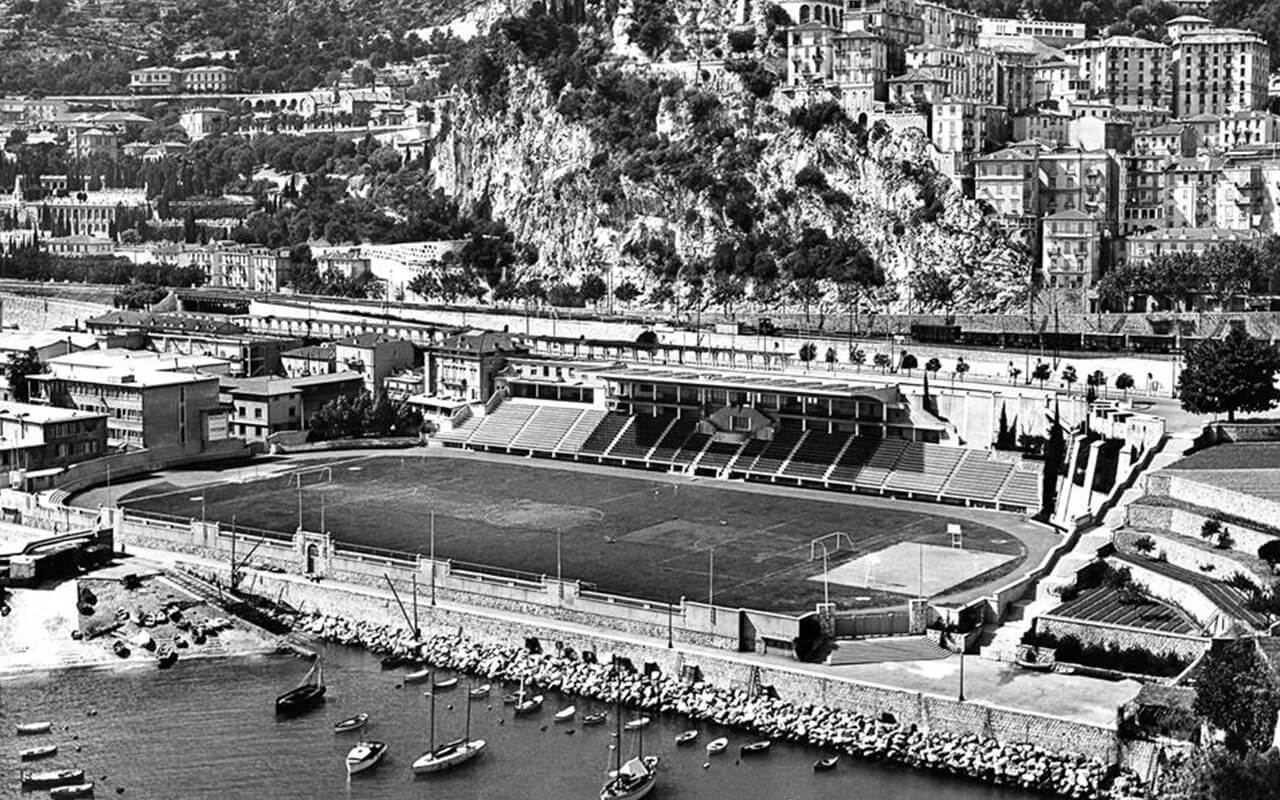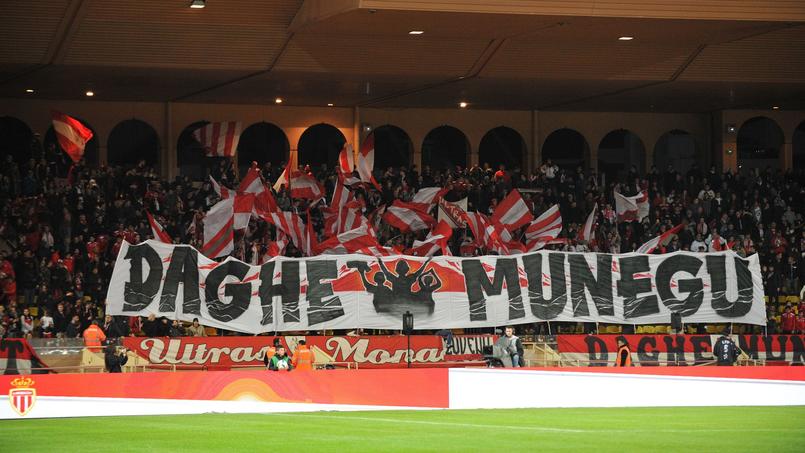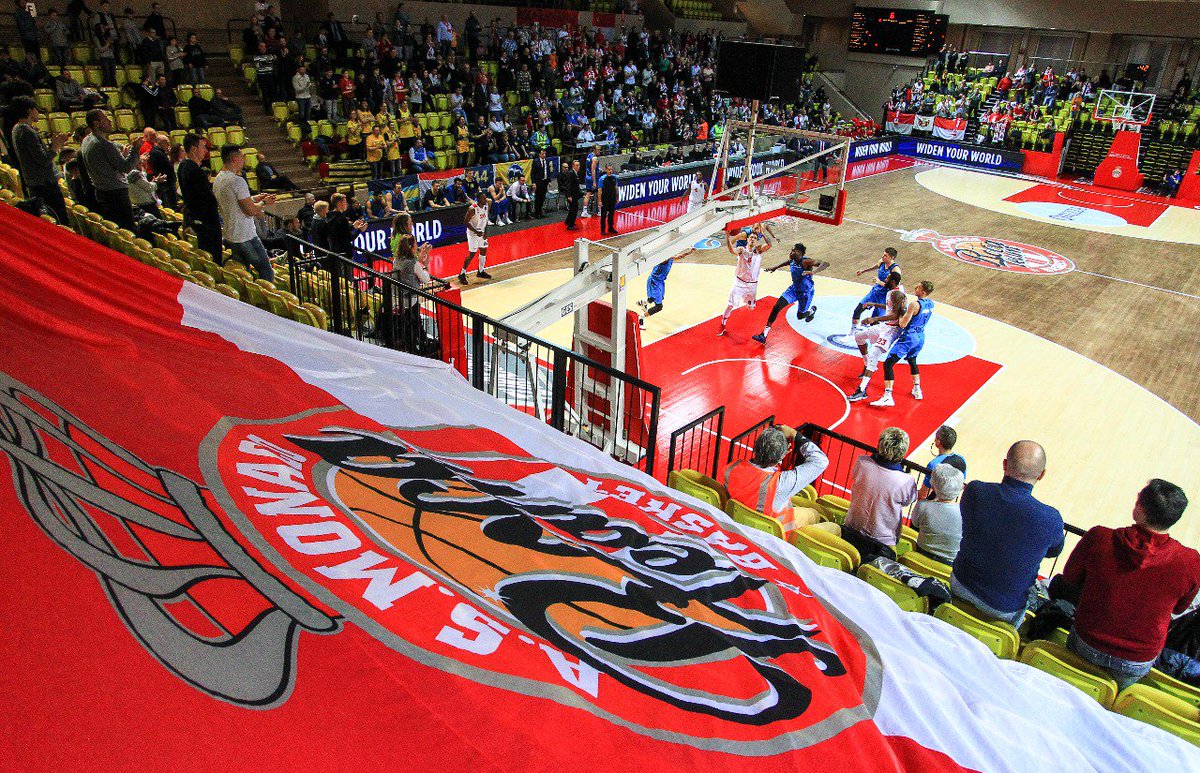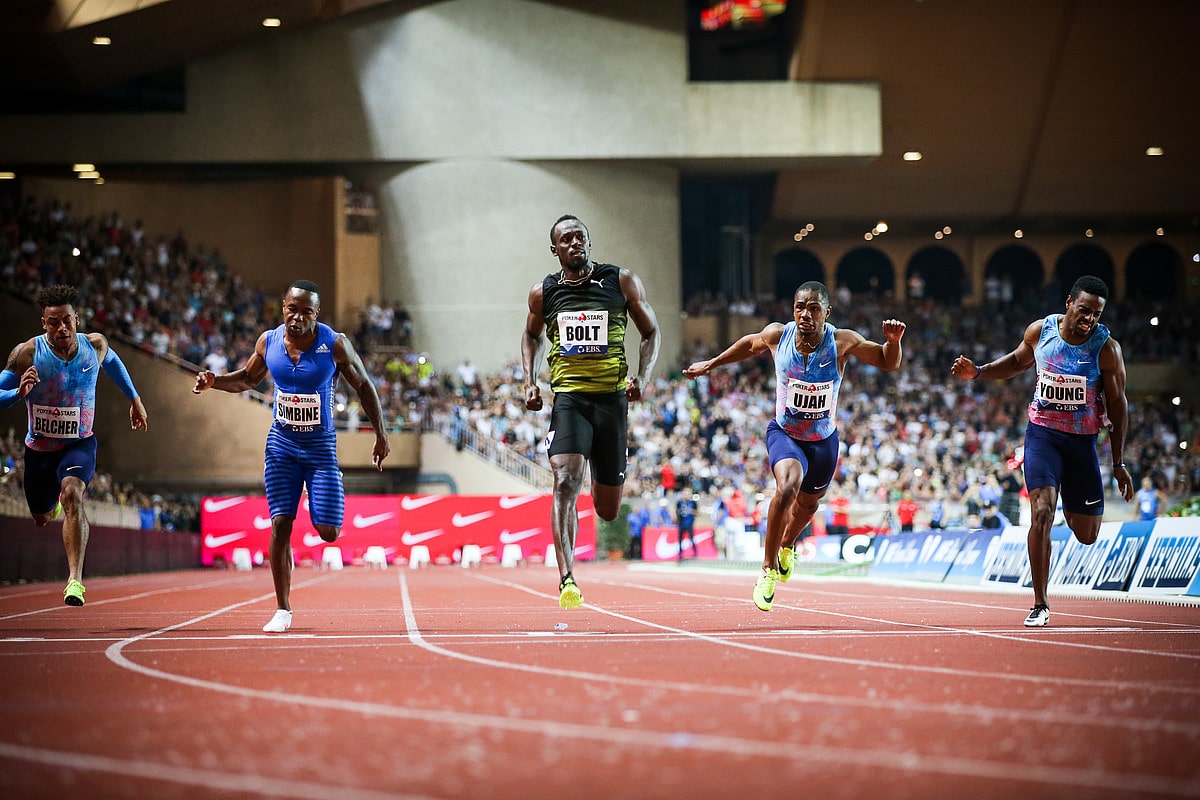Stade Louis II: 5 things to know about the home of AS Monaco

With its uncluttered architecture and its ability to blend in with the Principality’s landscape, Stade Louis II is a stadium which is unique not only in Europe but also the world. A true monument located in the heart of the Principality, the Louis-II is place with many stories.
New lease of life in 1985
The stadium that we know today has not always looked the same. In 1979, Prince Rainier III of Monaco decided to build a space dedicated to sport in the Fontvieille neighbourhood of the Principality, calling on Parisian architects to draw up plans for the complex. In 1981, the works on the current Stade Louis II began, and the new site was inaugurated on 25th January 1985. Construction required close to 120,000 m3 of concrete, 9,000 tons of iron and more than 2,000 tons of metal framework for a platform built out from the sea. The former Stade Louis II (1939-1985) was razed to the ground, giving way to what is now the Fontvieille shopping centre.

Unique architecture
What stadium in the world matches the Olympian arches and clean lines of Stade Louis II? Its massive arches and sizeable athletic track make a real trompe l’oeil in the urban landscape of the Principality. If you were to pass by without knowing its true purpose, it would be hard to imagine a football stadium was what waited inside. Its architecture fits in naturally to the similar buildings that dot the surrounding neighbourhood. On match nights, the stadium is lit up spectacularly, enough to dazzle the whole Principality.

Stade Louis II and AS Monaco, a true love story
The stadium has seen the Rock’s beloved AS Monaco greatest exploits. The partnership began on 26th January 1985 with a 3-0 win against RC Lens. In its birthplace, ASM has enjoyed some of the finest hours in its history, most notably on the European stage. During the Red and White’s spectacular run in the 2003/4 Champions League, we saw memorable victories over Real Madrid and Chelsea (both ended in valiant 3-1 wins).

A multifunctional stadium complex
The Stade Louis II not only holds a 105x68m grass pitch and 400m 8-lane athletics track, but it is also fitted with the Prince Albert II Water Sports’ Centre and Olympic swimming pool. Given its foundations are raised 10-metres above road level, it also has ample space for the Gaston-Médécin sports hall, home of the Roca Team, as well as AS Monaco’s administrative headquarters, their training centre, and even the International University of Monaco.

A theatre for global events
In addition to regularly hosting Champions League matches through AS Monaco, the Stade Louis II also had the privilege of hosting the UEFA Super Cup final every year between 1998 to 2012. It offered an opportunity to see matches between the most successful clubs in Europe, if not the world.
Since 1987, Monaco has hosted the Herculis track and field meet, one of the stages of the Diamond League. This annual event brings together the world’s greatest athletes, such as Jamaican 100m legend Usain Bolt and Russian pole-vaulter Yelena Isinbayeva. She even broke the world pole vaulting record in the stadium (5.04m) in 2008. Since 1993, the Gaston-Médecin indoor sports arena has been the venue for the Monaco International Judo Tournament, while the Prince Albert II Water Sports’ Centre welcomes clubs from around the Mediterranean every year. Two concerts have also taken place in the Principality’s stadium: the group Eagles, for the wedding of Prince Albert II and Charlene Wittstock, and Muse, as part of the Black Holes and Revelations Tour, on 12th July 2007.














